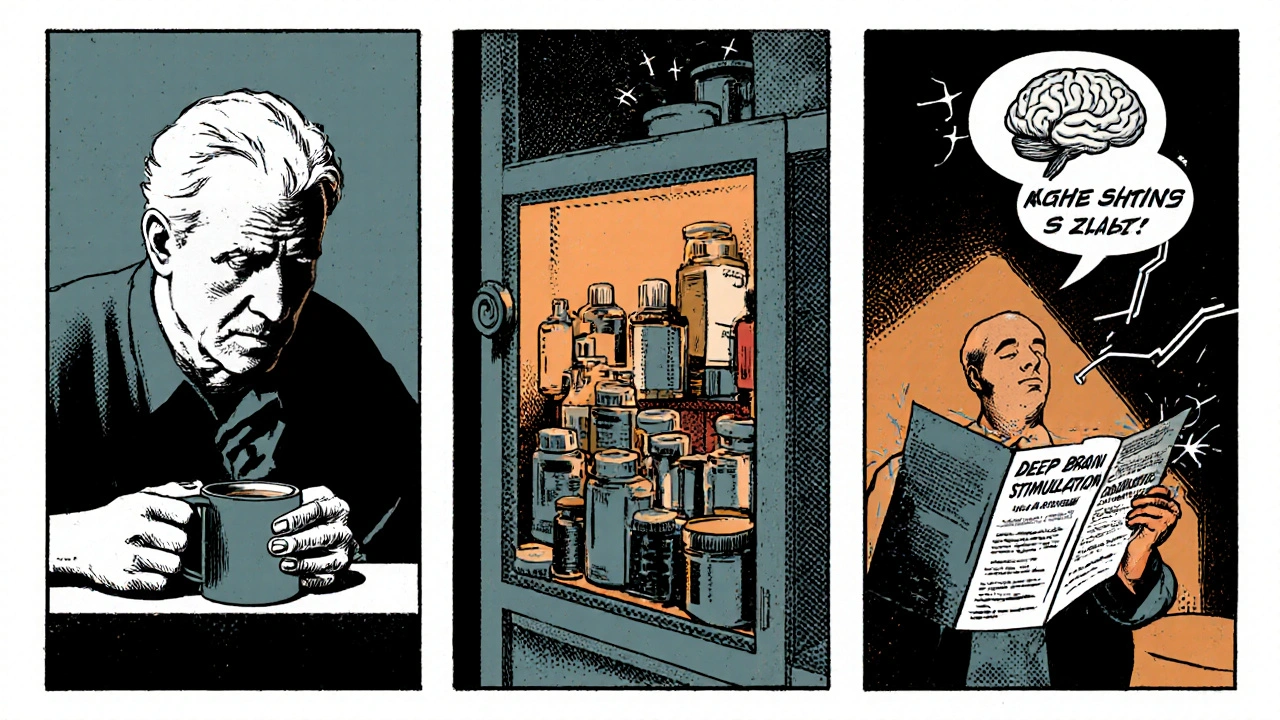Neurostimulation: How Electrical Techniques Shape Brain and Body
When working with Neurostimulation, the use of electrical or magnetic energy to modulate nerve activity for therapeutic or performance purposes. Also known as neuromodulation, it bridges medicine, technology, and everyday health. By gently nudging neurons, neurostimulation can calm chronic pain, lift mood, or improve motor control.
One of the most talked‑about methods is Deep Brain Stimulation (DBS), a surgically implanted system that sends continuous pulses to specific brain regions. DBS enables precise control over tremor, Parkinson’s symptoms, and even treatment‑resistant depression. Another non‑invasive option is Transcranial Magnetic Stimulation (TMS), which uses a magnetic coil placed on the scalp to induce brief electric currents in cortical neurons. TMS requires a calibrated coil and a trained operator, but it avoids surgery and has become a go‑to for major depressive disorder. The third major player is Vagus Nerve Stimulation (VNS), a technique that targets the vagus nerve in the neck or ear. VNS influences autonomic regulation, helping with epilepsy, depression, and even inflammatory conditions. Together, these three modalities illustrate how neurostimulation encompasses both invasive and non‑invasive approaches, each with its own risk‑benefit profile.
Why neurostimulation matters for everyday health
Neurostimulation isn’t limited to hospitals; wearable EMG and electrical muscle stimulation (EMS) devices are popping up in gyms, helping athletes recover faster and seniors regain strength. The underlying principle is the same: deliver a controlled pulse, trigger a physiological response, and let the body adapt. This principle also shows up in drug discussions across our site—many medications, like gabapentin or topiramate, act as chemical modulators of the same neural pathways that electrical stimulation targets. Understanding the overlap helps you pick complementary therapies without over‑loading your nervous system.
When you combine neurostimulation with lifestyle tweaks—sleep hygiene, balanced diet, stress management—you create a multi‑layered support system. For instance, a patient using DBS for Parkinson’s may benefit from an anti‑inflammatory diet that reduces oxidative stress, while someone trying TMS for depression might see added gains from regular aerobic exercise that boosts brain‑derived neurotrophic factor (BDNF). The synergy between physical, chemical, and electrical interventions is a growing research focus, and many of our articles explore those cross‑overs.
Below you’ll find a curated list of posts that break down specific drugs, device options, safety tips, and practical how‑tos—all tied back to the core idea of neurostimulation. Whether you’re curious about the latest TMS protocols, need guidance on buying a reliable EMS kit, or want to understand how prescription meds complement electrical therapy, the collection has you covered.

Deep Brain Stimulation for Parkinson’s Disease: What You Need to Know
Explore how Deep Brain Stimulation works, who qualifies, the surgical steps, benefits, risks, and how it compares to medication for Parkinson's disease.
Read More